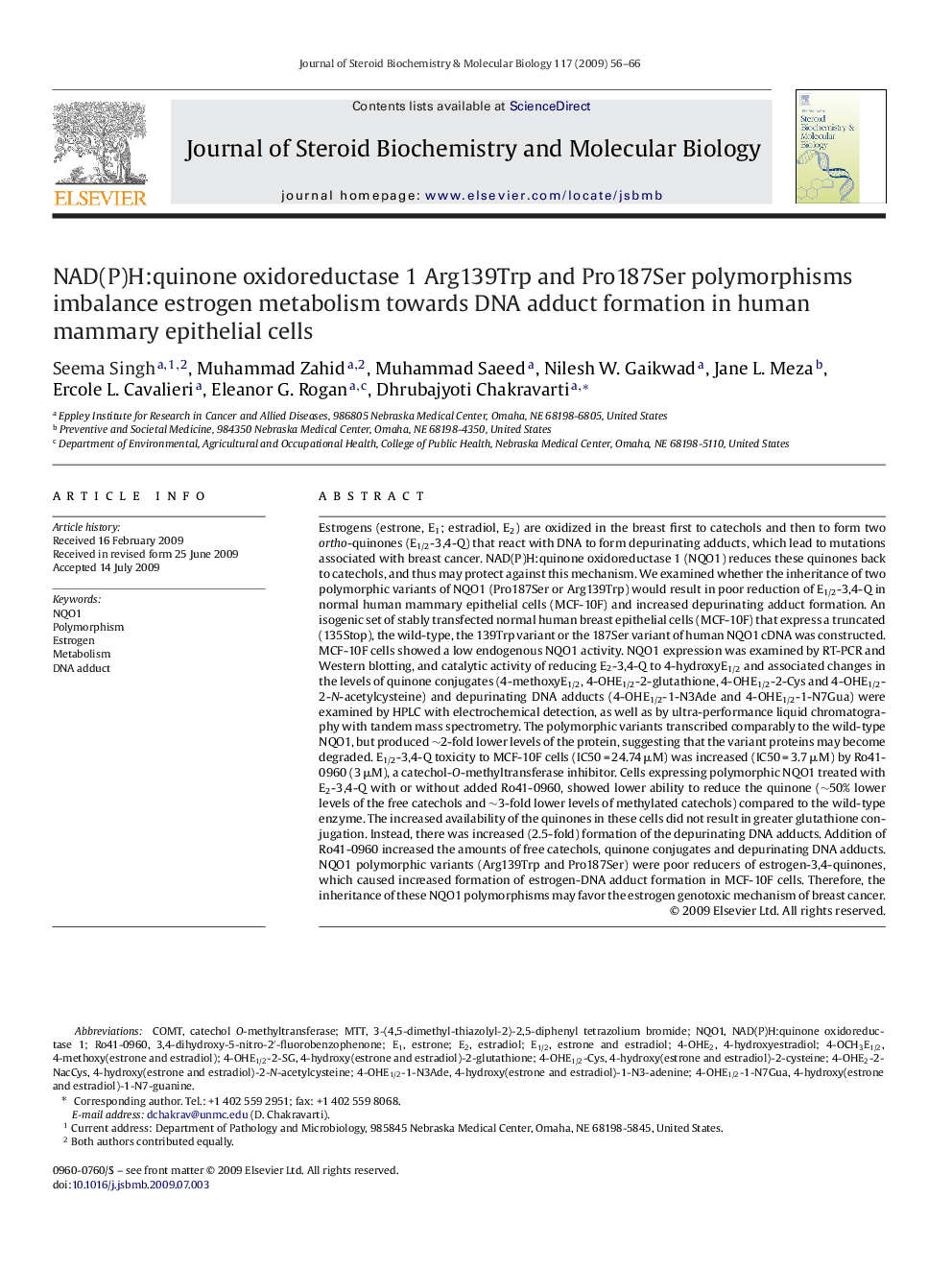| کد مقاله | کد نشریه | سال انتشار | مقاله انگلیسی | نسخه تمام متن |
|---|---|---|---|---|
| 1992626 | 1541053 | 2009 | 11 صفحه PDF | دانلود رایگان |

Estrogens (estrone, E1; estradiol, E2) are oxidized in the breast first to catechols and then to form two ortho-quinones (E1/2-3,4-Q) that react with DNA to form depurinating adducts, which lead to mutations associated with breast cancer. NAD(P)H:quinone oxidoreductase 1 (NQO1) reduces these quinones back to catechols, and thus may protect against this mechanism. We examined whether the inheritance of two polymorphic variants of NQO1 (Pro187Ser or Arg139Trp) would result in poor reduction of E1/2-3,4-Q in normal human mammary epithelial cells (MCF-10F) and increased depurinating adduct formation. An isogenic set of stably transfected normal human breast epithelial cells (MCF-10F) that express a truncated (135Stop), the wild-type, the 139Trp variant or the 187Ser variant of human NQO1 cDNA was constructed. MCF-10F cells showed a low endogenous NQO1 activity. NQO1 expression was examined by RT-PCR and Western blotting, and catalytic activity of reducing E2-3,4-Q to 4-hydroxyE1/2 and associated changes in the levels of quinone conjugates (4-methoxyE1/2, 4-OHE1/2-2-glutathione, 4-OHE1/2-2-Cys and 4-OHE1/2-2-N-acetylcysteine) and depurinating DNA adducts (4-OHE1/2-1-N3Ade and 4-OHE1/2-1-N7Gua) were examined by HPLC with electrochemical detection, as well as by ultra-performance liquid chromatography with tandem mass spectrometry. The polymorphic variants transcribed comparably to the wild-type NQO1, but produced ∼2-fold lower levels of the protein, suggesting that the variant proteins may become degraded. E1/2-3,4-Q toxicity to MCF-10F cells (IC50 = 24.74 μM) was increased (IC50 = 3.7 μM) by Ro41-0960 (3 μM), a catechol-O-methyltransferase inhibitor. Cells expressing polymorphic NQO1 treated with E2-3,4-Q with or without added Ro41-0960, showed lower ability to reduce the quinone (∼50% lower levels of the free catechols and ∼3-fold lower levels of methylated catechols) compared to the wild-type enzyme. The increased availability of the quinones in these cells did not result in greater glutathione conjugation. Instead, there was increased (2.5-fold) formation of the depurinating DNA adducts. Addition of Ro41-0960 increased the amounts of free catechols, quinone conjugates and depurinating DNA adducts. NQO1 polymorphic variants (Arg139Trp and Pro187Ser) were poor reducers of estrogen-3,4-quinones, which caused increased formation of estrogen-DNA adduct formation in MCF-10F cells. Therefore, the inheritance of these NQO1 polymorphisms may favor the estrogen genotoxic mechanism of breast cancer.
Journal: The Journal of Steroid Biochemistry and Molecular Biology - Volume 117, Issues 1–3, October 2009, Pages 56–66